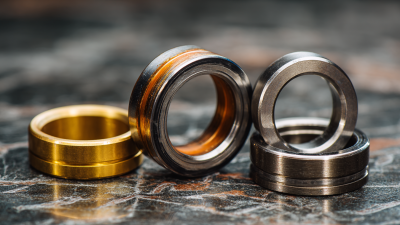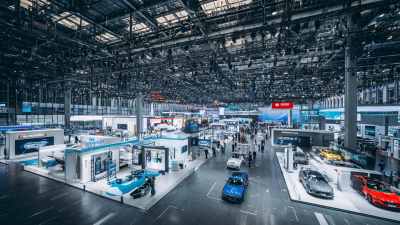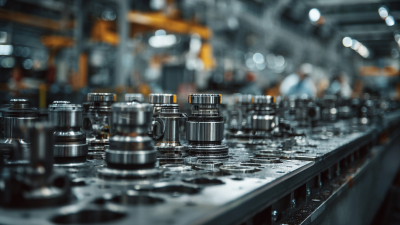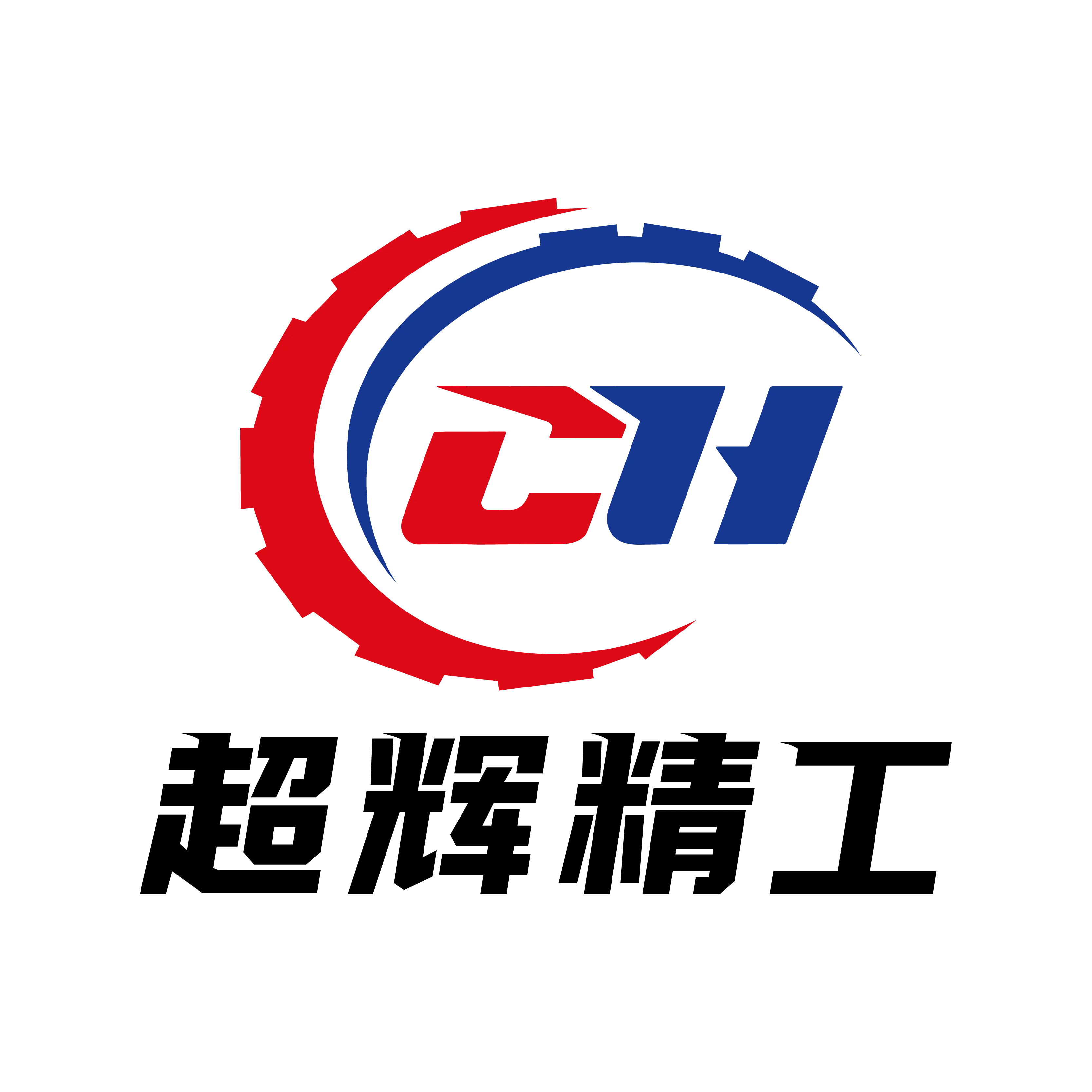The advancement of hydraulic seals is critical in enhancing both performance and longevity in various industrial applications. According to a recent report by MarketsandMarkets, the global hydraulic seals market is projected to reach $5.4 billion by 2025, driven by the increasing demand for efficient sealing solutions in manufacturing and machinery sectors. Hydraulic seals not only prevent fluid leakage but also maintain pressure, which is essential for the optimal functioning of hydraulic systems. With innovations in materials and design, modern hydraulic seals can operate under extreme conditions, offering a service life that is significantly longer than traditional seals. As industries strive for greater efficiency and reliability, the focus on advanced hydraulic seals solutions becomes paramount, setting a new standard for performance and durability across applications.

The emergence of revolutionary materials has significantly transformed the performance and longevity of hydraulic seals. Advanced polymers and composite materials are now engineered to withstand extreme pressures and temperatures, thereby enhancing seal integrity and functionality. These innovations have led to the development of seals that not only exhibit superior resistance to wear and tear but also minimize the risk of leakage, which is critical in hydraulic systems.
Moreover, the introduction of smart materials that can adapt to varying operational conditions is paving the way for even greater efficiencies. These materials respond dynamically to changes in pressure or temperature, ensuring optimal performance throughout their lifespan. As industries seek to improve operational reliability while reducing maintenance costs, the adoption of these advanced hydraulic seal solutions becomes increasingly vital, marking a significant leap forward in hydraulic technology.
This chart illustrates the significant performance improvements achieved through the use of advanced materials in hydraulic seals. The data showcases the percentage increase in longevity, resistance to wear, and effectiveness of hydraulic seals over recent years.
The efficiency of machinery significantly hinges on the design and implementation of hydraulic seals. These components play a crucial role in preventing fluid leaks and minimizing energy loss, thereby enhancing overall performance. An ideal hydraulic seal not only ensures that the machinery operates smoothly but also helps to prolong its lifespan by reducing wear and tear caused by fluid contamination and pressure fluctuations. Advanced design techniques, such as utilizing high-performance materials and precision engineering, can greatly improve sealing effectiveness, which in turn boosts machinery efficiency.
**Tips:** To maximize the benefits of hydraulic seals, consider these key factors: First, regularly inspect seals for signs of wear or damage, as early detection can prevent costly failures. Second, select seals that are specifically designed for the intended application, taking into account factors such as pressure, temperature, and fluid compatibility. Lastly, ensure proper installation by following manufacturer guidelines to maintain optimal sealing performance.
When hydraulic seals are optimized, machinery operates more reliably and efficiently. This not only helps in reducing operational costs but also contributes to sustainability by minimizing energy waste. The impact of well-designed hydraulic seals reverberates throughout the entire machinery system, making it an essential focus for manufacturers and operators alike.

In today's competitive industrial landscape, the adoption of advanced hydraulic seals can lead to significant cost savings over time. Industry statistics indicate that these innovative seals can reduce maintenance expenses by up to 30%, minimizing the frequency of repairs and replacements. This not only translates to direct financial benefits but also enhances operational efficiency by reducing downtime, allowing businesses to focus on their core activities rather than dealing with hydraulic failures.
Tip: Regularly inspect hydraulic seals for wear and tear. Early detection of potential issues can prevent costly breakdowns and extend the lifespan of your equipment.
Moreover, advanced hydraulic seals contribute to energy efficiency, reducing leaks that often result in wasted hydraulic fluid. This can further lower operational costs, as well as contribute to environmentally sustainable practices. Statistics show that companies utilizing high-performance seals can save thousands of dollars on fluid replenishment alone while also meeting eco-friendly regulations.
Tip: Invest in quality over quantity. Choosing high-quality hydraulic seals may have a higher upfront cost, but the long-term savings in operational efficiency and reduced maintenance will be worth the investment.
Hydraulic seals play a pivotal role in extending the lifespan and reliability of various industrial equipment. The advanced materials and designs used in modern sealing solutions significantly contribute to reducing wear and tear, thereby minimizing equipment downtime. Recent developments in high-pressure radial seals demonstrate how innovation leads to enhanced performance, allowing systems to operate efficiently under challenging conditions. By effectively managing fluid leakage and preventing contamination, these seals ensure that hydraulic systems remain operational for extended periods.
Moreover, focusing on maintenance practices, such as the implementation of protective measures for hydraulic and pneumatic cylinder rods, can further enhance the longevity of equipment. Simple solutions like protective boots can prevent premature failures and costly repairs, highlighting the importance of preventive maintenance in equipment lifecycle management. Addressing these aspects not only boosts reliability but also underscores the critical nature of hydraulic seals in maintaining optimal performance in industries reliant on hydraulic technologies.

The hydraulic seals market is on the brink of significant transformation, driven by innovative technologies designed to enhance performance and longevity. As the global mechanical seals market is projected to grow from USD 4.31 billion in 2024 to USD 6.13 billion by 2033, achieving a steady CAGR of 4%, the focus on advanced hydraulic seal solutions becomes increasingly important. Manufacturers are exploring cutting-edge materials and design approaches, aiming to create seals that not only perform effectively under high pressure but also contribute to sustainability through reduced environmental impact.
The future trends in hydraulic seal technology emphasize the integration of advanced materials and coatings that improve durability and efficiency. Innovations such as PFAS-free coatings and specialized materials for food contact applications illustrate the industry's commitment to safety and performance. As the market adapts to evolving demands, particularly in sectors like automotive and aerospace, the emphasis on multifunctional seals capable of withstanding harsh conditions is paramount. This evolution signifies a pivotal moment where performance and longevity are revolutionized, promising improved reliability for a wide range of applications.






